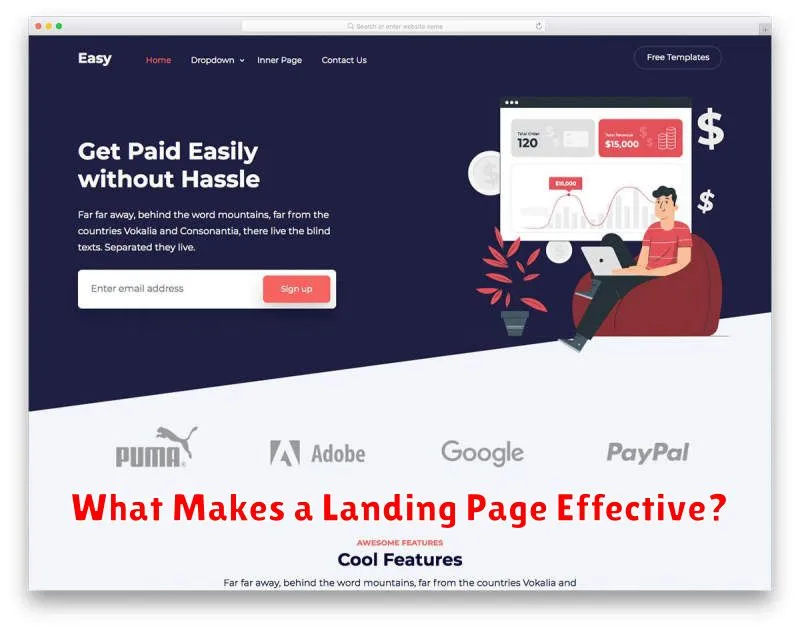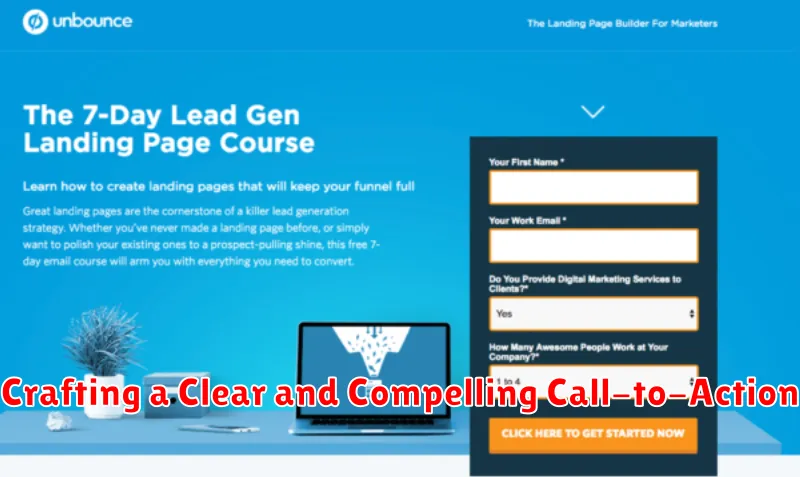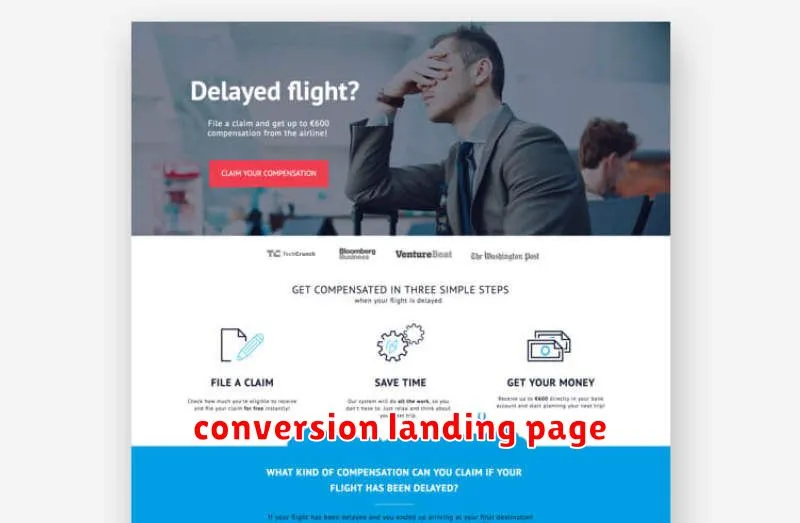Are you struggling to generate leads and sales from your online efforts? Creating high-converting landing pages is crucial for any successful online business. This article delves into the best practices for designing and implementing landing pages that effectively capture customer attention, drive conversions, and ultimately boost your online sales. Learn how to optimize your landing page design, copywriting, and call-to-actions to achieve maximum impact and see a significant return on your investment. Discover the secrets to crafting high-performing landing pages that convert visitors into paying customers.
What Makes a Landing Page Effective?

An effective landing page hinges on a clear and concise value proposition. Visitors should immediately understand what’s offered and why it benefits them. This requires strong headline copy and a compelling call to action (CTA).
Visual appeal is crucial. A clean, uncluttered design with high-quality images or videos enhances user experience and credibility. The page should be easy to navigate and load quickly, optimizing for different devices (responsiveness).
Targeted content is essential. The landing page’s messaging and design should align perfectly with the advertising or campaign that led the visitor there. Inconsistency leads to confusion and decreased conversion rates.
Finally, effective tracking and analytics are vital. Monitoring key metrics like bounce rate, conversion rate, and time on page provides valuable insights for ongoing optimization. This data-driven approach allows for continuous improvement and maximizing ROI.
How to Write Headlines That Grab Attention
Compelling headlines are crucial for successful landing pages. They’re the first (and sometimes only) impression you make on a potential customer. A weak headline leads to a high bounce rate; a strong one compels visitors to explore further.
To write attention-grabbing headlines, focus on clarity and benefit. Clearly communicate your value proposition. Instead of generic statements, highlight the specific benefit your product or service offers. Use strong verbs and avoid jargon.
Employ numbers and data to add credibility and urgency. Headlines like “Increase Sales by 20%” are far more effective than vague claims. Similarly, incorporating words that create a sense of urgency (e.g., “limited-time offer,” “now available”) can significantly improve conversion rates.
Test different headlines. A/B testing allows you to compare the performance of various headlines and determine which resonates most effectively with your target audience. Analyze your data and refine your approach continuously. Remember, what works for one audience might not work for another.
Consider using headline formulas that have proven effective, such as the “problem/agitation/solution” formula. This approach identifies a problem, highlights the frustration it causes, and then presents your product or service as the solution. This structure creates a compelling narrative that resonates with readers.
Ultimately, a great headline is concise, compelling, and directly related to the content on the landing page. It should accurately reflect the value proposition while piquing the reader’s interest enough to encourage them to engage further.
Crafting a Clear and Compelling Call-to-Action

A strong call-to-action (CTA) is crucial for converting website visitors into customers. It’s the final push that guides users towards a desired action, whether it’s making a purchase, signing up for a newsletter, or requesting a demo.
To craft a compelling CTA, ensure clarity. Use action-oriented verbs and concise language. Avoid ambiguity; visitors should instantly understand what you want them to do. For example, instead of “Learn more,” try “Get Your Free Quote Now.”
Urgency and scarcity can significantly boost conversion rates. Phrases like “Limited-time offer” or “Only a few left” create a sense of immediacy, encouraging faster decisions. However, avoid misleading tactics.
Visual appeal is also key. Use a prominent button design that stands out from the surrounding content. Consider using contrasting colors and strategic placement to draw attention.
Testing and optimization are vital for maximizing CTA effectiveness. Experiment with different button text, colors, placement, and overall design to identify what resonates best with your target audience. Track your results and iterate based on the data.
In short, a successful CTA is clear, concise, compelling, and visually appealing, encouraging immediate action from your website visitors. By focusing on these elements, you can significantly improve your landing page conversion rates.
Design Tips for Mobile-Friendly Landing Pages
Mobile optimization is crucial for landing page success. A significant portion of website traffic originates from mobile devices, making a mobile-first approach essential. Prioritize a clean and intuitive design that adapts seamlessly to different screen sizes.
Simplify navigation. Mobile users expect quick and easy access to information. Use clear and concise calls to action (CTAs), strategically placed for optimal visibility. Avoid cluttered layouts; prioritize essential content.
Optimize for touchscreens. Ensure interactive elements like buttons and forms are large enough to be easily tapped. Sufficient spacing between elements prevents accidental clicks. Consider using a design that is primarily finger-friendly.
Prioritize speed. Mobile users have less patience for slow-loading pages. Optimize images and minimize the use of heavy scripts to improve page load times. A fast-loading page improves user experience and conversion rates.
Test thoroughly. After implementing mobile-friendly design elements, rigorously test your landing page on various mobile devices and browsers. Ensure optimal functionality and visual appeal across different platforms.
By focusing on these key design aspects, you can create a mobile-friendly landing page that enhances the user experience, boosts engagement, and ultimately drives higher conversion rates.
The Role of Trust Badges and Testimonials
Trust badges and testimonials are crucial elements for high-converting landing pages. They address a key visitor concern: Is this website legitimate and trustworthy?
Trust badges, such as logos from payment processors (PayPal, Stripe) or security certifications (SSL), visually reassure visitors that their transactions are secure. This directly reduces friction in the purchasing process.
Testimonials, on the other hand, provide social proof. Authentic reviews from satisfied customers build credibility and demonstrate the value of your product or service. Focus on including testimonials that highlight key benefits and address common concerns.
Strategic placement of both trust badges and testimonials, often above the fold and near calls to action, significantly improves conversion rates by fostering confidence and encouraging visitors to take the desired action.
How to Use Visual Hierarchy and Layout
Effective visual hierarchy guides the user’s eye through your landing page, ensuring they see the most important information first. This is achieved through careful arrangement of elements based on size, color, contrast, and whitespace.
Size: Larger elements draw more attention. Use larger font sizes for headlines and key calls to action (CTAs). Images should also be appropriately sized to emphasize their importance.
Color: Employ a limited color palette, using contrasting colors to highlight crucial elements like CTAs. Bright colors can be effective but should be used sparingly.
Contrast: Ensure sufficient contrast between text and background for readability. Dark text on a light background, or vice versa, is generally best.
Whitespace (or negative space): Don’t overcrowd the page. Proper whitespace improves readability and helps guide the eye.
Layout: A clear and intuitive layout is essential. Use grids and consistent spacing to create a visually appealing and easy-to-navigate page. Consider using the F-shaped pattern for optimal readability, where users scan the top left, then down the left side and finally across the top.
By mastering visual hierarchy and layout, you create a landing page that is not only aesthetically pleasing but also highly effective in converting visitors into customers. Prioritize clear communication and easy navigation to achieve maximum impact.
A/B Testing for Higher Conversion Rates
A/B testing, also known as split testing, is a crucial element in optimizing landing pages for higher conversion rates. It involves creating two versions of a landing page (A and B) with slight variations, such as different headlines, calls to action (CTAs), or images. These variations are then shown to different segments of your audience, and the results are analyzed to determine which version performs better.
By testing different elements, you can identify which variations resonate most effectively with your target audience. This iterative process allows you to continuously improve your landing page’s performance. Key metrics to track include conversion rates, click-through rates, and bounce rates. Analyzing these metrics provides valuable insights into user behavior and helps you make data-driven decisions.
Effective A/B testing requires a well-defined hypothesis, sufficient sample size to ensure statistically significant results, and a clear understanding of your goals. It’s important to only test one variable at a time to isolate the impact of each change. This methodical approach ensures accurate attribution and prevents misleading results. Regular A/B testing is an essential component of a successful online sales strategy.
Landing Page Tools and Builders to Try
Creating high-converting landing pages requires the right tools. Several excellent platforms offer various features to suit different needs and budgets. Consider these options when choosing a landing page builder:
Unbounce is a popular choice known for its ease of use and A/B testing capabilities. It offers a wide array of templates and integrations, making it suitable for various marketing strategies. Its drag-and-drop interface simplifies the design process.
Leadpages excels in lead generation features. Its intuitive builder makes creating optimized landing pages straightforward. Leadpages also boasts robust integrations with email marketing platforms.
Instapage is a powerful platform suited for more advanced users. Its focus on personalization and performance optimization allows for highly targeted campaigns. It offers advanced analytics and reporting tools.
HubSpot is a comprehensive marketing platform that includes a landing page builder. Its strength lies in its integration with other HubSpot tools, offering a unified marketing ecosystem. This is beneficial for businesses already utilizing the HubSpot suite.
ClickFunnels is a sales funnel builder that also includes landing page creation capabilities. It is designed for businesses focusing on sales funnels and streamlined conversion processes.
The best landing page builder for you depends on your specific requirements and technical expertise. Consider factors like ease of use, features, integrations, and pricing when making your selection. Many platforms offer free trials, allowing you to test before committing.

